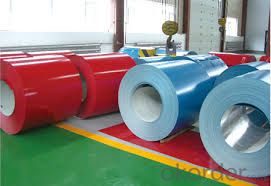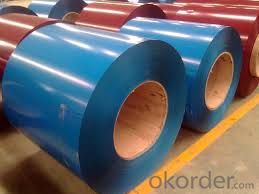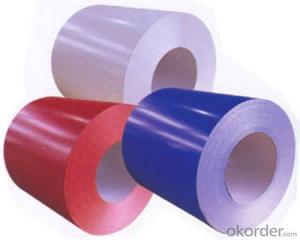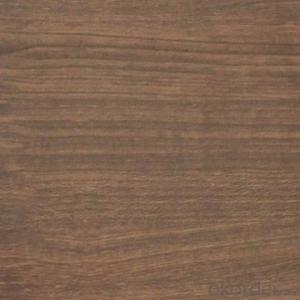0.4mm/0.45mm/0.47mm/0.5mm Pre-Painted Galvanized Steel Roofing Sheet PPGI
- Loading Port:
- Shanghai
- Payment Terms:
- TT OR LC
- Min Order Qty:
- 25 m.t.
- Supply Capability:
- 9000 m.t./month
OKorder Service Pledge
OKorder Financial Service
You Might Also Like
Product Description
0.4mm/0.45mm/0.47mm/0.5mm Pre-Painted galvanized Steel Roofing Sheet PPGI
Painting: Polyester(PE) PVDF
Standard: ASTM, JIS,AISI, GB
Grade: SGCC.SPCC.DC51D,DC52D,DC53D
thickness: 0.2mm---1.0mm
Width: 914mm,1000mm, 1200mm, 1250mm, 1500mm or as your request
Zinc coating: 40-250g/m2
Color: Ral code or as the client request
Packing: wooden with the waterproof paper
Delivery: 4 weeks
MOQ: 5tons or negotiable
Applications
1) Refrigerator, washer, switch cabinet, instrument cabinet, air conditioning, micro-wave oven, bread maker
2) Exterior applications such as: Wall cladding, facades, roofs and canopies, tunnels, column covers or renovations
3) Interior applications such as: Wall cladding, ceilings, bathrooms, kitchens and balconies


Brand Name | CNBM |
Product Name | PPGI / PPGL (PCM) |
Thickness of Base Metal | 0.2~0.8mm |
Painting material | Polyester(PE) PVDF epoxy |
Painting Thickness | 7~30μm |
Surface Protection | PE protective film |
Color | Ral code or as the client request |
Surface Treatment | Degreasing and chemical treatment |
Gloss | 5-105% |
Coating Hardness (pencil resistance) | ≥H |
Flexibility (T-bend) | ≤2T |
MEK resistance | More than 100 |
Supplying Status | Sheet: Width≤2000mm,Length≤5000mm |
Coil: Width≤2000mm,N.W≤5T,Inner Diameter: φ408mm φ505 φ508 | |
Application | Home appliance: Refrigerator shutter & side panels, Washer, Freezers, Air conditions, Rice Cooker, Microwave Ovens, Water Heaters, Sterilization Cabinets, Range Hoods Computer Panels , DVD/DVB panels, TV back panel etc. |
- Q:what is tool steel and does it function better than carbon or spring steel?
- It depends on the tool steel you are referring to and the function of the sword. L6 steel is a modern tool steel that a few smiths are using (Howard Clark, MAS, etc.), which produces some amazing swords that are both tough and flexible, but very few smiths are qualified to work with it and it is easy to screw up the heat treatment. T10 is another tool steel used by a few larger manufacturers (Paul Chen, etc.), which has a very high carbon content and includes a tungsten ally which makes it very tough and a little more resilient then 1095 carbon steel, however, as with any very high carbon steel, they may be durable but may also chip or break. 1060 and 1075 is the standard steel for most modern production swords since they provide a good balance between hardness, and durability. Spring steel is good if you are concerned about a sword taking a lateral bend, but is only really necessary if you do a lot of tameshigiri and have not yet developed a consistent hasuji.
- Q:Can i use steel shot in a remington 870 wingmaster full choke 30 inch barrel. the shotgun is in great shape and about 20 or 25 years old probably. thank you. the steel shot i have got is 12 gauge 2 3/4 in 1550 velocity 1 1/16 oz 2 shot winchester xpert high velocity steel shot
- Because of environmental concerns steel, bismuth and tungsten is replacing lead shot, for bird hunting. The problem with steel shot is the hardness, which can cause damage to the bore and choke in older shotguns. Unlike lead there is no give to steel and it can damage the bore especially if the choke is on full. Tungsten is also very hard, but it is often alloyed with other metals making it softer causing less damage in older models shotguns. Bismuth falls in between tungsten and steel, being the softer of the two by far.
- Q:Is it possible that stainless steel watches get rust. Any experience? Thanks.
- Under certain conditions, even stainless steel will rust. They include: Exposure to some noble metals (copper/silver) in a corrosive atmosphere - and why stainless must be separated from silver or silver plate in a dishwasher. Stainless steel will pit if touching silver as many DW detergents are rich in chlorine. Under some conditions, and depending on your skin chemistry, if you wear a copper bracelet on the same arm as the watch, the surface of the watch will pit. If you commonly are exposed to some kinds of welding fluxes, if you are exposed to water with high salt concentration and you do not rinse off the watch after exposure, that can pit the surface. Stainless Steel is no more than corrosion-resistant, not corrosion-proof. Most of the time under most conditions, it is fine. But not all of the time under every condition. As it happens, what affects SS the most is any kind of electrolysis due to galvanic action involving halogen salts.
- Q:Well im currently doing a project. Wanna help me? Because trust me, i really need it. You know how steel was created in China? If you didnt, you just learned something newww(: but anyways got any info on that? Websites? or just info from websites? Well lemme know because if its the best you get Best Answer Easy points right? (: Okay thanksss (:
- Steel is created in a primitive way whenever iron oxide ore (red dirt) is mixed with wood and burned. Seemingly everyone has a pet theory how their own selected country was the first to notice and do it on purpose. Regards, Larry.
- Q:What are the different types of steel coil cutting tools?
- In the market, one can find a variety of steel coil cutting tools. These tools have been specifically designed to efficiently and accurately cut steel coils. Some of the commonly used types of steel coil cutting tools include: 1. Slitting shears: These shears are widely utilized to cut steel coils into narrow strips. Equipped with multiple blades, slitting shears offer clean and precise cuts without causing any damage to the material. They are typically employed in high-volume production and are capable of handling different thicknesses of steel coils. 2. Rotary shears: Another commonly used cutting tool for steel coils is the rotary shear. These shears consist of rotating blades that shear through the material as it passes through them. Rotary shears are perfect for cutting medium to thick steel coils and are known for their high cutting speed and accuracy. 3. Guillotine shears: Guillotine shears are heavy-duty cutting tools that can handle thick steel coils. They operate by exerting a downward force to cut through the material in one clean stroke. Renowned for their power and precision, guillotine shears are suitable for cutting large volumes of steel coils. 4. Laser cutting machines: Advanced cutting tools like laser cutting machines employ a high-powered laser beam to cut through steel coils. These machines offer precise and intricate cuts with minimal heat distortion. Laser cutting machines are ideal for cutting complex shapes and patterns on steel coils. 5. Water jet cutting machines: Water jet cutting machines utilize a high-pressure stream of water mixed with abrasive particles to cut through steel coils. This method provides high accuracy and does not generate heat, making it suitable for cutting heat-sensitive materials. Water jet cutting machines can cut through various thicknesses of steel coils and produce smooth edges. Each type of steel coil cutting tool has its own advantages and is suitable for different applications. The choice of tool depends on factors such as the thickness of the steel coil, required precision, production volume, and budget.
- Q:What are the different types of steel coil storage methods?
- There are several types of steel coil storage methods, including stacking coils vertically, using coil cradles or saddles, utilizing coil racks or frames, employing coil lifters or C-hooks, and implementing automated coil storage systems. Each method is designed to accommodate different storage requirements and ensure the safety and efficient handling of steel coils.
- Q:They both sell the same thingIf prices are to high companies won't by the steelIf prices are to low then the steel company won't earn enoughWhy are some steel companies more successful than others
- Steel is a global commodity. There is some variety in product (flat rolled, tubing, etc), but basically the same product worldwide. Cost to the customer includes shipping of a very heavy product. Inputs are also heavy and costly to ship. Inputs: - Coal - Iron Ore. Some firms have the ability to recycle old steel, a competitive advantage. - Energy (very energy intensive industry) - Labor - Machinery. A new blast furnace is more efficient than 50 years old. So the most profitable steel firms have some of these characteristics: - Proximity to raw materials - Proximity to customers - Access to cheaper means of transportation; rail and sea - Newer machinery - Cheaper labor force - Reasonable cost for electricity and fuel for furnaces
- Q:How do steel coils contribute to the marine industry?
- Steel coils contribute to the marine industry by being used in the construction of ships and offshore structures. They are essential for manufacturing various components, such as hulls, decks, beams, and structural supports. Steel coils provide strength, durability, and corrosion resistance, ensuring the longevity and safety of marine vessels and infrastructure. Additionally, steel coils are used for the production of marine equipment, including cranes, winches, and anchor chains, further enhancing the efficiency and functionality of the marine industry.
- Q:Can steel coils be coated with RFID technology?
- Yes, steel coils can be coated with RFID technology. This technology allows for tracking and identification of the steel coils, improving supply chain management and providing real-time information on their location and status.
- Q:What could the impurities in steel wool be?And why are they there?Thanks for your help :)
- Impurities in steel wool would be of the elemental type. I'm sure steel wool is a mixture of different low grade not good for much of anything else materials. There may be excessive impurities such as lead, cobalt, boron, aluminum etc... in the steel wool. There may also be solvent residue on the wool i.e cleaner, lubricant etc.. I'm sure every batch is different - I know the iron level is high thats what makes them rust quickly.
1. Manufacturer Overview |
|
|---|---|
| Location | |
| Year Established | |
| Annual Output Value | |
| Main Markets | |
| Company Certifications | |
2. Manufacturer Certificates |
|
|---|---|
| a) Certification Name | |
| Range | |
| Reference | |
| Validity Period | |
3. Manufacturer Capability |
|
|---|---|
| a)Trade Capacity | |
| Nearest Port | |
| Export Percentage | |
| No.of Employees in Trade Department | |
| Language Spoken: | |
| b)Factory Information | |
| Factory Size: | |
| No. of Production Lines | |
| Contract Manufacturing | |
| Product Price Range | |
Send your message to us
0.4mm/0.45mm/0.47mm/0.5mm Pre-Painted Galvanized Steel Roofing Sheet PPGI
- Loading Port:
- Shanghai
- Payment Terms:
- TT OR LC
- Min Order Qty:
- 25 m.t.
- Supply Capability:
- 9000 m.t./month
OKorder Service Pledge
OKorder Financial Service
Similar products
New products
Hot products
Related keywords





























